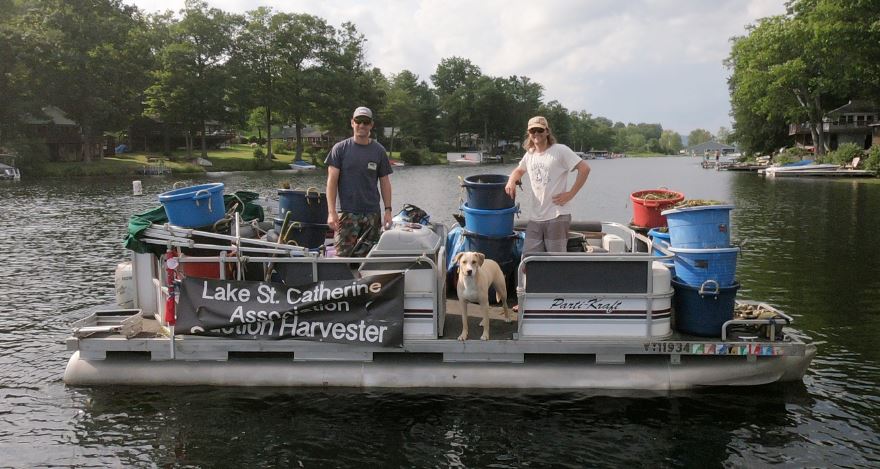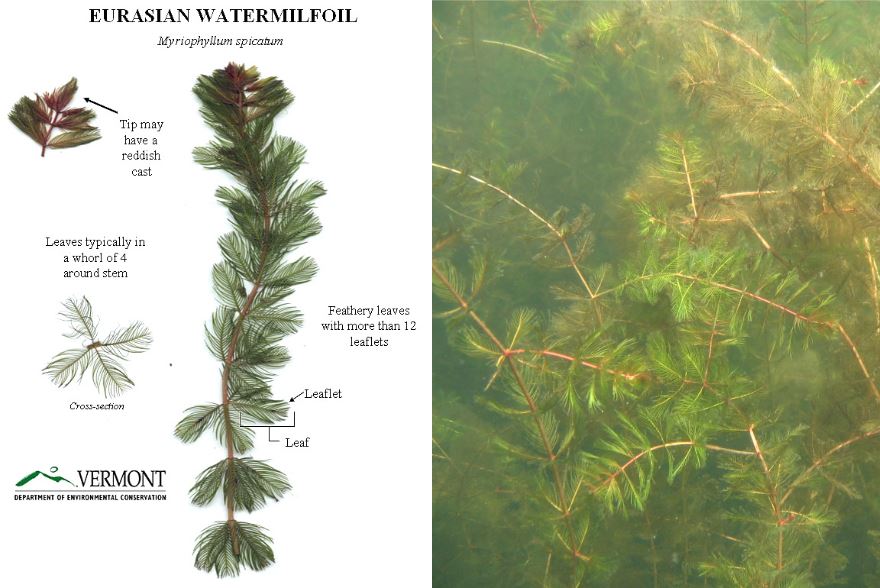Hello LSC, we'd like to let you know about the LSCA's 2023 plans for our Milfoil Control Program.
On May 8th, LSCA Trustees, a member of our Diver Assisted Suction Harvesting (DASH) team, and our contractor performed a spring survey of the lake for milfoil growth. We were happy to see that the majority of the milfoil observed was sparse in density, and was comparable to what was detected during the late fall survey.
After reviewing all the data, and discussing the current milfoil conditions, our Milfoil Control Committee and our DASH team have concluded that we will not need to perform a spot treatment this year. All the hard work of our Milfoil Control Committee, our DASH team, and all of you who have been removing milfoil from the lake have helped to get us to this point. Milfoil is an extremely fast growing invasive weed, so a spot treatment may be needed in the future. However, we will be working very hard to keep milfoil at sparse, controllable levels that our DASH team can manage to the extent possible. This season, our DASH team will be expanding by adding a new member to their crew, and this team will be able to handle the milfoil identified in the surveys. Soon, we’ll share a map showing the locations the DASH team will be working in this season.

LSCA's Diver Assisted Suction Harvesting team - Owen & Beck
There has been regrowth of milfoil in the northern section of Little Lake. Since DASH is not feasible there because the depth and loose sediments making it difficult to work, we are exploring a hand-pulling pilot program there this year. We’ll provide details on this potential new program soon.
What does the LSCA do to control milfoil?
Our Milfoil Control Program consists of four components:
1. ‘Stop The Spread’ education and outreach. Our ‘Stop The Spread’ campaign educates boaters and property owners on best practices to limit the spread of milfoil.
2. Volunteer milfoil cleanup. Throughout the season, we organize volunteers to collect floating milfoil from the lake and deposit it at designated drop off points which is then picked up and disposed of. We also encourage boaters and property owners to remove any milfoil they see in the lake.
3. DASH - Diver Assisted Suction Harvesting. Our DASH crew hand-pulls milfoil by the roots from the lakebed which is then suctioned up through a tube to a catch table on a boat. Milfoil is then placed in 17.5 gallon buckets for transport.
4. Herbicide spot treatments with ProcellaCOR EC. In order to maximize our DASH crew’s time, effectiveness, and amount of acres covered, one of our control methods includes spot treatments of the herbicide ProcellaCOR EC. (There will be no treatment in 2023)
Although not directly related to Milfoil Control, our work on Lake Wise, the LSC Stormwater Master Plan, and the LSC Watershed Action Plan all help to limit phosphorus and other nutrients from entering the lake which can contribute to excessive plant growth, while improving overall water quality.

These efforts have resulted in the lowest percent of milfoil cover and frequency of occurrence at our 199 GPS data points in the lake since the mid-2000s. Also, and just as importantly, we have seen that numerous species of our native aquatic plants have increased in frequency of occurrence at the data points. This is exactly what we want to see! LSC has over 30 native aquatic plants which are important and necessary to sustain a healthy lake ecology. Our efforts are focused on reducing the amount of milfoil in the lake so that these native aquatic plants can grow as they normally would. Because of our milfoil control efforts, we again have a complex and diverse native plant community.
What can you do to help?
- As a general rule, get as much milfoil out of the lake as possible and dispose of it..
- Don’t drive through milfoil patches with your boat which will create fragments.
- If you have milfoil on your prop, don’t just reverse and drive away, please remove it from the lake.
- If you have milfoil growing in your dock or swimming area, pull it out by the roots and remove it from the lake.
- If you see milfoil floating anywhere in the lake, near your dock, or along your shoreline, remove it from the lake.
- Become a member of the LSCA to help support our efforts!
We will be holding our annual Milfoil Cleanup Community Day & Milfoil Control Meeting at the Wells Lakeside Park on Saturday, June 17th at 9 AM. All are welcome to attend to learn about our milfoil control plans for the season, and then those who would like to participate can head out onto the lake to do some milfoil & detached plant cleanup. We'll be placing the drop-off float soon. If you have a place on the Channel and you'd like to volunteer to to have the drop-off float near your place to keep an eye on it for us, please let us know. More info on this meeting & volunteer day soon.
The LSCA has always employed evidenced-based decision making when evaluating lake related issues, and we continue to do so with our Milfoil Control Program. Working with the State and lake scientists & experts, following the science and the data, and evaluating the results of our efforts show that we are doing the right things for the long-term health of LSC. To our members, and all who love LSC, if you ever have any questions or concerns, reach out to us, we’d be happy to answer them. You can always reach us at info@lakestcatherine.org.
Read more about Eurasian watermilfoil (milfoil, EWM, Myriophyllum spicatum) - what it is, what it does when introduced into a lake, and why we work to control it in Lake St. Catherine on our Milfoil Control Program here: lakestcatherine.org/milfoil-control-program